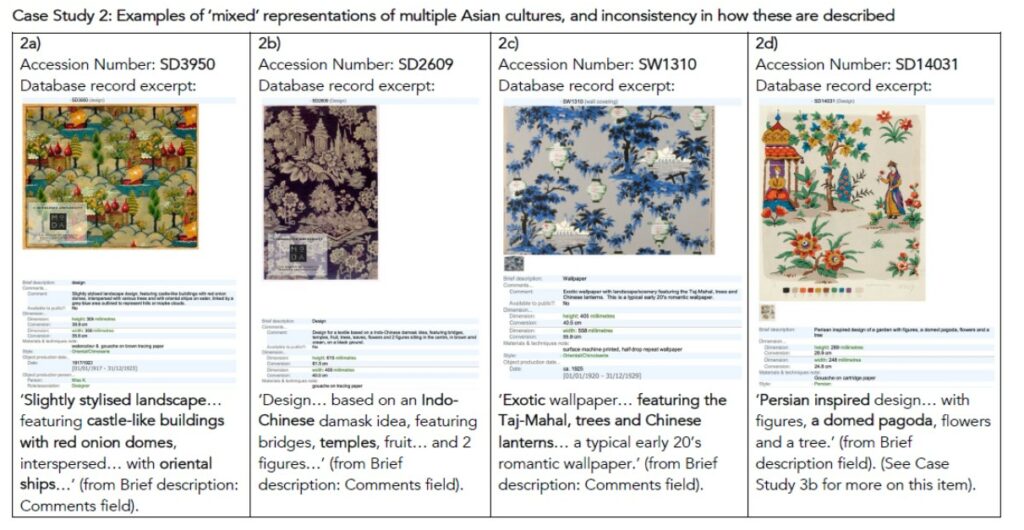Cataloguing the ‘Oriental’ in MoDA’s Silver Studio Collection 2: Empowered Representation
A guest post by Kirsty Kerr, a Masters student on the New Museum School Advanced Programme run by Culture& and Museum Studies at Leicester University
We were delighted to host student Kirsty Kerr from Leicester University who was on a placement at the Museum of Domestic Design and Architecture for one day a week between April and June this year.
Kirsty is part of the New Museum School Advanced Programme run by Culture& and Museum Studies at Leicester University, aimed at nurturing a more diverse workforce for the museum sector. Various initiatives have been implemented over the years to try to attract people from different backgrounds. There is recognition that sector-wide change will only come when museums employ a wider range of people, and through that a more diverse range of voices and interpretations of heritage will be heard.
We asked Kirsty to look at the use of the word “Oriental” as a descriptive term in MoDA’s Silver Studio Collection. Silver Studio designers of wallpapers and textiles used it to describe a loosely-defined set of visual characteristics that vaguely meant “Eastern” motifs.
In this second guest post, Kirsty reflects on questions of power and representation in collections-related museum information
The Power of naming
A Eurocentric term, ‘Oriental’ is a problematic label placed upon cultures who’ve not chosen it for themselves. This raises questions around power: who is being named and who is doing the naming?
In MoDA’s Silver Studio collection, ‘Oriental’ was not used by designers to describe people per se, but designs and motifs. While this brings another layer of nuance, the museum could do more to critique usages of the term in its catalogue. It has tended to reproduce words from early twentieth century Silver Studio records uncritically in the museum database. These range from descriptions of Japanese flowers and Chinese script, to stereotypical portrayals of ‘the East’ that seem to amalgamate several Asian cultures. Through these designs, the Silver Studio reflected and maintained a vision of ‘the Orient’ in the British imagination.
Challenging colonial narratives
Without problematising a term that presumes a White gaze, the museum continues to presume a White Britain. It’s worth noting here that East and South East Asian people are not only misrepresented in collections, but continue to be missing from museum audiences and workforces in the UK.
Beyond challenging colonial narratives and (mis)perceptions of ESEA [East and Southeast Asian] and Asian-British identity, museums have an opportunity to amplify new voices, and to empower people to speak for themselves – to name, represent and celebrate their own heritages, and to tell their stories from their own perspectives.
You can read my full report and recommendations here: Kerr, Kirsty (2023). Cataloguing the ‘Oriental’ in MoDA’s Silver Studio Collection. Middlesex University. Preprint. https://doi.org/10.22023/mdx.24081330.v1
Find Kirsty on LinkedIn , X (formerly Twitter) and Instagram @kirstyjkerr

‘Excerpt from a series of Silver Studio collection case studies, which form part of Kirsty’s report
If you haven’t read the first post in this series, do check it out, and don’t miss the third post!